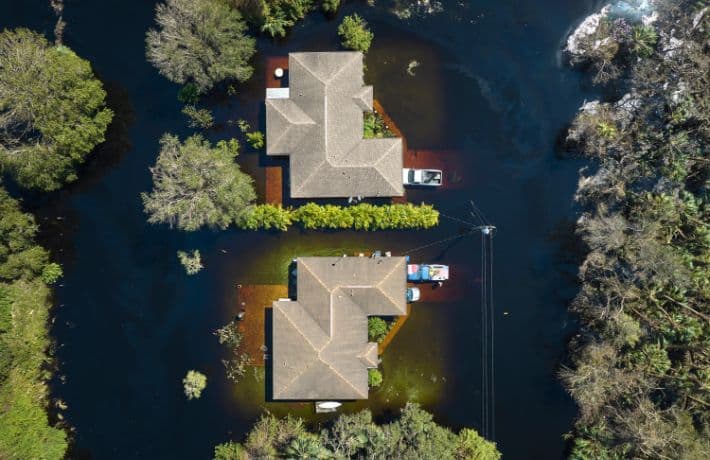FEMA’s Proposed Rule on FFRMS: What Floodplain Managers Need to Know
On October 2, FEMA posted a notice of proposed rulemaking on the Federal Register concerning its implementation approach to the Federal Flood Risk Management Standard (FFRMS) and updates to the 8-step decision making process used by FEMA to determine whether a proposed action would be located within or affect a floodplain, and if so, whether and how to continue with or modify the proposed action. Comments are due no later than December 1, 2023 and it follows a similar notice from the Department of Housing and Urban Development issued this past spring on their approach to implement the FFRMS.
ASFPM is continuing to review the proposed rule, but in recent conversations with members from the state and local level, I wanted to use my column to try to clarify and simplify the intent, application, and outcome of this proposed rule as many of our members, especially those who only administer NFIP standards, may not have a good understanding of the proposed rule’s application.
Why this rule and why now? Going all the way back to 1977, Executive Order (EO) 11988 was a directive by the President Carter to ensure that federal actions were evaluated to determine floodplain impacts (process) and then apply a standard which, until 2015, was largely equivalent to the NFIP minimum standards (with protection to the Base Flood Elevation). In 2015, President Obama updated EO 11988 with EO 13690 which primarily changed the standard to the new FFRMS. The FFRMS allowed agencies to choose among three options to establish the standard: Climate Informed Science Approach (CISA), 500-year (or .2%) floodplain approach, or Freeboard Value Approach (FVA) which assigns a freeboard to the base flood elevation. President Trump discontinued EO 13690 and President Biden reinstated it. So now agencies are doing the necessary work to show how they are going to implement any changes in their decision-making process as well as incorporating the new standard.
What is FEMA proposing to change? FEMA is making changes to both the 8-step process and the standard that applies to FEMA’s actions. One of the process changes is to the dollar thresholds for projects exempt from the 8-step decision making process, increasing them to reflect inflationary increases over time and to then index future changes to the Consumer Price Index.
Perhaps the most significant change is a process change to Step 1, which is how floodplains and wetlands are determined to apply to include the new FFRMS standard. FEMA proposes to revise Step 1 to require FEMA to first determine whether the proposed action falls within the definition of an “action subject to the FFRMS.” Under the proposed rule, if FEMA determines that the action is a Federally Funded Project (i.e., if FEMA determines that the action uses FEMA funds for new construction, substantial improvement, or to address substantial damage to a structure or facility), the FFRMS floodplain applies. If, on the other hand, FEMA determines that the action does not fall under the definition of an action subject to the FFRMS and if the action is considered non-critical, the 1 percent annual chance floodplain applies. If the action is considered critical, the 0.2 percent annual chance floodplain applies.
Previously Step 1 had been largely tied to the standard of the FEMA mapped Special Flood Hazard Area. Now, FEMA is proposing to use a CISA-first approach. Additionally, the application of the FFRMS is not only vertical but horizontal in extent too.

CISA is FEMA’s preferred policy approach because it has the potential to be the best and most well-informed approach to building resilience in an equitable manner and ensuring a reduction in disaster suffering. CISA is the only approach that ensures projects are designed to meet current and future flood risks unique to the location and thus ensures the best overall resilience, cost effectiveness, and equity. Further, the FFRMS considerations require FEMA to consider the type of criticality of the action involved, the availability and actionability of data, and equity concerns, as further explained in the current proposed supplementary policy. However, as actionable climate data are not currently available for many locations, FEMA is proposing the Freeboard Value Approach (FVA) and 0.2 Percent Annual Chance Flood Approach (0.2PFA) alternatives in the absence of actionable CISA data. Specifically:
- For critical actions: (111) FEMA proposes the higher of the +3-foot FVA floodplain or the 0.2PFA floodplain. (112) Where the 0.2PFA data are not available, the +3-foot FVA will be utilized.
- For non-critical actions: FEMA proposes the lower of the +2-foot FVA or 0.2PFA.
A key for making Step 1 work; however, is that there must be an efficient approach to determine the boundaries and elevation of the FFRMS floodplain. As noted in the proposed rule and confirmed by ASFPM, FEMA has not only developed and issued a FFRMS Floodplain Determination Job Aid, but in it, it references a Decision Support Tool that FEMA and NOAA are jointly developing. Indeed, it is critical that field staff, applicants, and others have a tool that makes it easy to determine the extent and elevation of the FFRMS floodplain. This was a budget priority last year for FEMA, and currently work is underway to complete the first phase of the tool and data that will support it.
Next, Steps 4 and 5 of the 8-step process would be updated to reflect a requirement to use natural features and nature-based approaches, where possible, in consideration of alternatives within or affecting floodplains and wetlands. This is consistent with EO 11988, FEMA’s priorities to promote the use of nonstructural flood protection methods, minimize the impact of its actions on the floodplain, and restore and preserve the natural and beneficial values served by floodplains as well as preserve and enhance the natural values of wetlands. In applying the 8-step process to its actions, FEMA has integrated factors into its impact analysis and minimization measures (Step 4 and Step 5) to identify those opportunities for beneficial floodplain and wetland values, to include natural values related factors that prioritize water resource values, living resource values, and agricultural, aquacultural, and forestry resource values. Requiring natural features or nature-based solutions as alternatives, where possible, allows for FEMA to further encourage those actions that increase the natural and beneficial function of the floodplain.
Other proposed changes include clarification of the exclusion of debris clearance and removal, and actions in the interest of national security (such as an underground bunker) from the FFRMS; clarification that the minimization standards apply to all of FEMA’s grant programs (not just Stafford Act programs); applies the FFRMs standard where FEMA funds are used for new construction, substantial improvement or to address substantial damage to a structure or facility; clarifies that the floodway standard is based on either the surcharge set by the NFIP or by the community, whichever is more restrictive; and clarifies how and when the FFRMS applies to temporary housing. FEMA, is also seeking comment on whether removing private bridge projects from the 8-step process would adversely impact the floodplain.
How does this proposed rule apply to the work that I do? This is very significant because those involved in coordinating the NFIP or administering local floodplain regulations may have a very different exposure to the requirements of the 8-step process and FFRMS than those working with FEMA’s mitigation programs or Public Assistance. It is first important to know that the NFIP has a programmatic exemption from the FFRMS, therefore the 8-step process may not be very meaningful to local floodplain managers. However, if you have worked with FEMA mitigation grants or Public Assistance funds to repair a building, then the process has much more relevance. For example, Step 2 which is Early Public Review, is something that anyone applying for hazard mitigation funds is familiar with as the notice in the local newspaper of a proposed action in the floodplain (which is submitted with the mitigation project application). Perhaps the greatest impact of this proposed rule is the FFRMS standard itself which, after more than 40 years, is being updated. This will impact mitigation projects going forward and for floodplain managers who are permitting these projects or facilities being substantially repaired/rebuilt with public assistance dollars, the elevation standard may exceed what you have adopted in your local codes.
When will this go into effect? After the deadline for comments has passed, FEMA will review the comments, make adjustments to the rule as needed and issue a final rule. Upon issuance of the final rule, or a date specified therein, the rule becomes effective. It also appears that this proposed rule will only go into effect for new grants and funding assistance awarded after the finalization of the rule. In other words, it will not be retroactive.
Overall, it appears that FEMA has put forth a solid and purposeful proposed rule that will lead to more flood resilient FEMA investments. ASFPM is currently seeking to determine whether FEMA will do additional outreach on this proposed rule and is determining how we might further inform members of the impacts of it, as well as conducting a deeper analysis. In any case, we would urge you as floodplain managers throughout the nation to weigh in on this proposed rule before the Dec. 1 deadline.
Your partner in loss reduction,



